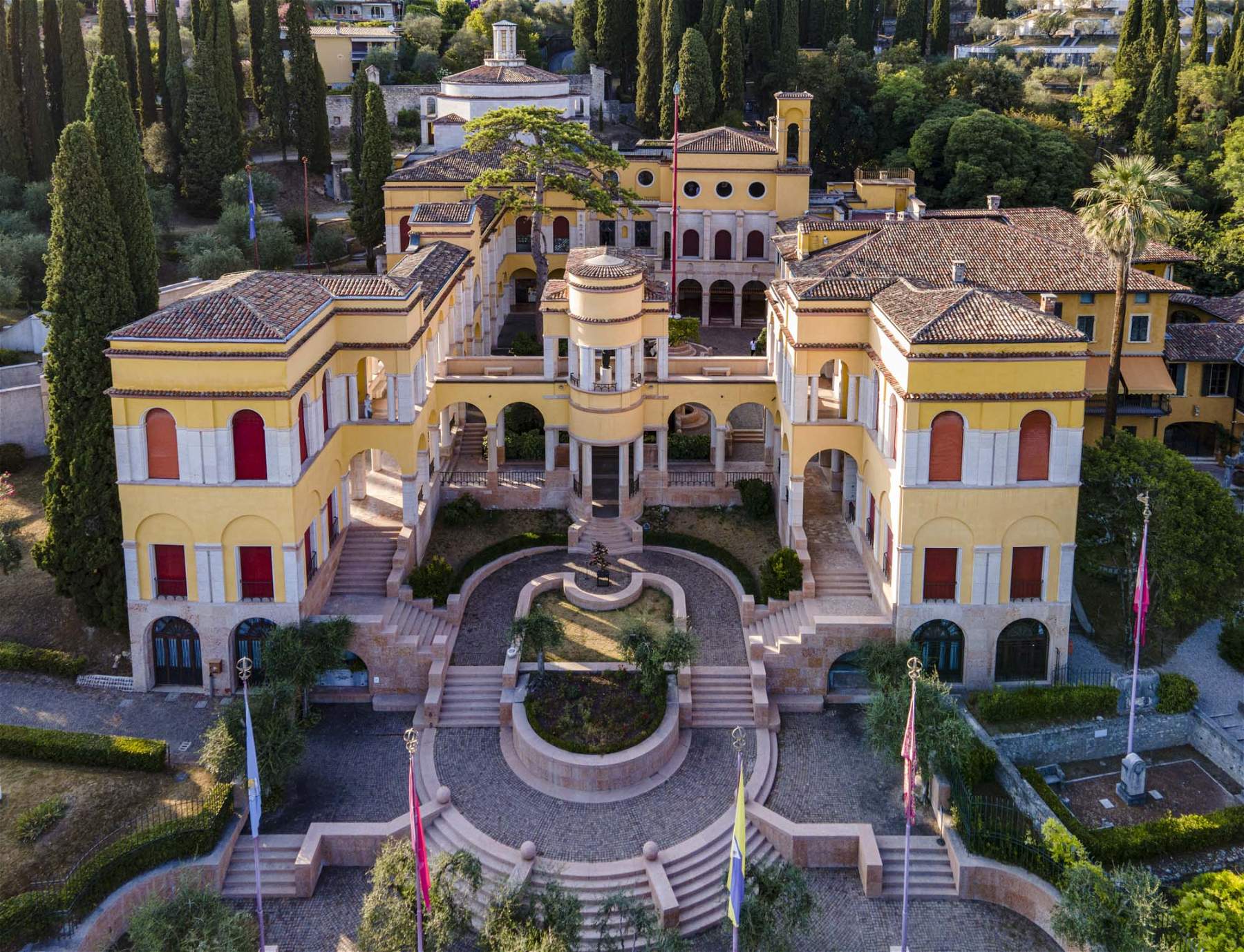It is inspired by “Vittorio Cini. The Last Doge,” as Indro Montanelli called him, the exhibition scheduled from March 11 to September 10, 2023 at the Vittoriale degli Italiani in Gardone Riviera, at the MAS shelter and inside the D’Annunzio Segreto, curated by Marco Di Capua. The latter has selected some 30 works by contemporary artists for this occasion, which in many cases were specially created for the event.
Confronting Benito Mussolini with very clear words, Vittorio Cini, Minister of Communications, at the Council of Ministers on June 19, 1943, first told him that he could not continue as he had done for the past three years to be surprised by events! The Italian people were poor and in disarray. And he therefore demanded an end to that useless war on Hitler’s side! For this stance he took, after September 8 Cini was arrested by the Germans and deported to Dachau concentration camp.
In the year of the 160th anniversary of Gabriele d’Annunzio’s birth, the exhibition stems from Francesco and Riccardo Avati’s desire on the occasion of the re-edition of Anna Guglielmi Avati ’s writing, Vittorio Cini’s granddaughter, to bring back to the attention of scholars and artists the figure of this protagonist of Italian history and economic, political, social and cultural life of the 20th century, whose actions and events Avati reconstructs also in relation to the Fascist period, to demonstrate the rigorous, courageous and free character of her grandfather.
The exhibition aims to recount the figure of Cini in a new light, offering visitors a rereading of the “multidimensionality of the character” through some significant original documents and through the works of artists, such as Riccardo Ajossa, Tahar Ben Jelloun, Marco Bernardi, Alberto Biasi, Vito Bongiorno, Andrea Boyer, Ettore de Conciliis, Stefania Fabrizi, Shay Frisch, Giuseppe Gallo, Carlo Gavazzeni Ricordi, Rosaria Gini, Alessandra Giovannoni, Elisa Grezzani, Claudio Koporossy, Umberto Mariani, Riccardo Monachesi, Isabella Monari, Giorgio Ortona, Tommaso Ottieri, Mimmo Paladino, Achille Perilli, Elena Pinzuti, Piero Pizzi Cannella, Oliviero Rainaldi, Mauro Reggio, Giovanni Tommasi Ferroni, Emilio Vedova, and Ortensio Zecchino, who have worked specifically for this exhibition or who appear linked to Cini by the same ideal path, traced by the curator by following the places, words, and concepts that describe this entrepreneur, collector, and patron.
Numerous works insist on the very places in which Cini left an indelible mark, starting with his adopted city, Venice, where he lived in the 16th-century palace on the Grand Canal, in San Vio, and where he promoted the recovery of theIsland of San Giorgio Maggiore by founding there the first private Italian institution aimed at humanistic research. And again the mainland, the industrial area of Porto Marghera, of whose urban district he laid the foundations; and Rome the Eternal City, where Mussolini entrusted him with the management of the Universal Exposition. Other works refer to his entrepreneurial ventures (for example, in the electrical industry) and his biographical story: a “Cini geography” that reveals, as Di Capua writes, “a creative and civil, design and aesthetic DNA that conditions and makes evident, in a glaring way, the modern sense of Italian civilization.”
The exhibition catalog Vittorio Cini. The Last Doge at the Vittoriale published by the publishing house Il Cigno GG Edizioni, offers the re-edition of Anna Guglielmi Avati’s writing on his grandfather Vittorio Cini, a critical essay on the exhibition by Marco di Capua, and also a valuable contribution by Giordano Bruno Guerri who writes: “Vittorio Cini is one of the most interesting figures of the Italian twentieth century [...] and yet he is not studied enough. Yet his life is of those that can be called ’novel-like,’” and again, “Cini always looked at the Duce with disenchanted eyes and was among the first to understand-during the war-that it was necessary to get rid of him as soon as possible.”
Acharity auction together with Christie’s will also be held in July in which many of the works on display will be sold in order to allocate the proceeds to the reintegration into society, in Italy, of women who have suffered violence.
Photo by Marco Beck Peccoz, detail
 |
| At Vittoriale degli Italiani, contemporary artists remember Vittorio Cini |
Warning: the translation into English of the original Italian article was created using automatic tools. We undertake to review all articles, but we do not guarantee the total absence of inaccuracies in the translation due to the program. You can find the original by clicking on the ITA button. If you find any mistake,please contact us.